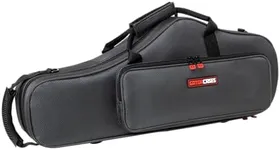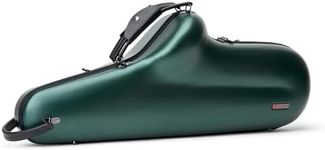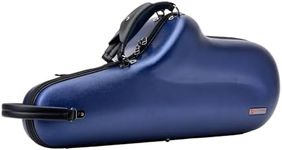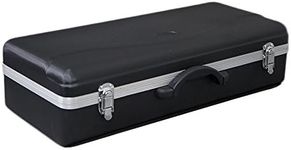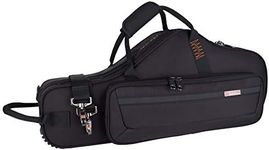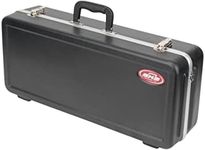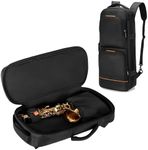Buying Guide for the Best Alto Saxophone Cases
Choosing the right alto saxophone case is crucial for protecting your instrument and ensuring its longevity. A good case will safeguard your saxophone from physical damage, environmental factors, and make transportation easier. When selecting a case, consider the following key specifications to find the best fit for your needs.MaterialThe material of the case is important because it determines the level of protection and durability. Cases can be made from hard materials like ABS plastic or wood, which offer excellent protection but can be heavier. Soft cases, often made from padded fabric, are lighter and easier to carry but may not provide as much protection. If you travel frequently or your saxophone is exposed to potential impacts, a hard case is recommended. For lighter, everyday use, a soft case might be sufficient.
PaddingPadding inside the case is crucial for absorbing shocks and preventing scratches. High-density foam or plush interiors offer the best protection. The amount and quality of padding can vary; more padding generally means better protection. If you have a high-value instrument or travel often, opt for a case with thick, high-quality padding. For less frequent use, moderate padding may be adequate.
WeightThe weight of the case affects how easy it is to carry. Heavier cases, often made from hard materials, provide more protection but can be cumbersome. Lighter cases are easier to transport but may offer less protection. Consider how often you will be carrying the case and over what distances. If you need to carry it frequently or for long distances, a lighter case might be more practical. For stationary storage or short trips, a heavier case could be a better choice.
Size and FitThe size and fit of the case are essential to ensure your saxophone is securely held in place. A case that is too large can allow the instrument to move around, increasing the risk of damage. Conversely, a case that is too small may not close properly or could put pressure on the saxophone. Look for a case specifically designed for alto saxophones and check the dimensions to ensure a snug fit. If you have a custom or vintage saxophone, you may need to look for a case with adjustable interiors.
Storage and CompartmentsAdditional storage and compartments can be very useful for carrying accessories like reeds, mouthpieces, and cleaning supplies. Some cases come with built-in compartments or external pockets. If you need to carry a lot of accessories, look for a case with ample storage options. For minimalists or those who prefer to carry accessories separately, fewer compartments might be sufficient.
Handles and StrapsHandles and straps affect the ease of carrying the case. Look for cases with sturdy, comfortable handles and adjustable shoulder straps. Some cases also offer backpack-style straps for hands-free carrying. If you will be carrying the case for long periods, ergonomic handles and padded straps can make a big difference in comfort. For short distances, basic handles may be adequate.
Weather ResistanceWeather resistance is important if you will be exposing your case to the elements. Some cases offer water-resistant or waterproof exteriors to protect against rain and humidity. If you live in a wet climate or plan to carry your saxophone outdoors frequently, a weather-resistant case is a good investment. For indoor use or dry climates, this feature may be less critical.
